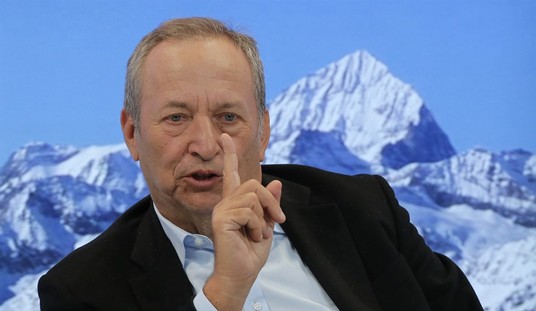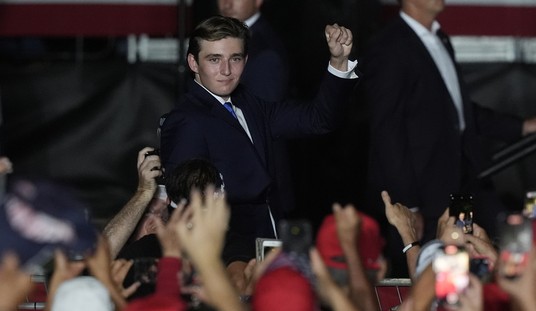Between 1922 and 1933, there was an amazing degree of cooperation between Germany, which was seeking to rearm in violation of the Versailles Treaty, and the Soviet Union, which was trying to modernize its military in between bouts of purging anyone who could read or write from the Red Army. In 1924, the Luftwaffe began training at Lipetsk. Chemical warfare troops were trained in the Volga region of the USSR. The Panzerschule operated in the town of Kama in what is now Tartarstan (fomerly Kazan). Future field marshals, Keitel, Mannstein and Model, all graduated from the German military academy in Moscow.
The point being is that if a nation is hell-bent on evading international monitoring of its weaponry it can do so with very little effort. If this applies to ideological foes, even foes that understand they will engage in warfare one day, it is much more relevant when dealing with international pariah states. The Obama administration seems to have lost sight of this salient fact in dealing with Iran.
Iran has already been caught concealing major nuclear weapons research facilities. The last, at Fodow, was discovered while the current round of negotiations was underway. This tells you all you need to know about Iran’s intent. Not only have they not declared all their nuclear capabilities but they have said they will not allow the IAEA to conduct snap inspections:
An Iranian official has reacted to comments by the head of the UN nuclear agency demanding snap inspections of Iran’s nuclear sites.
Six world powers and Iran are facing an end-of-the-month deadline to reach a framework agreement to limit Tehran’s nuclear program in exchange for sanctions relief. Tehran denies it is developing a nuclear weapon, as the West suspects.
Earlier this month Yukiya Amano, the head of the the UN’s International Atomic Energy Agency (IAEA), said Tehran should agree to snap inspections to reassure the international community.
Iran’s nuclear spokesman Behrouz Kamalvandi said Amano’s comments harm the delicate negotiations.
“It would be much better if Amano only talked about the IAEA’s seasonal and monthly reports,” he said, according to state TV on March 24.
So while we know that Iran is concealing facilities and will not allow snap inspections, we also know they are hiding their nuclear weapons program abroad.
Syria
Last November a car carrying Iranian and Syrian nuclear scientists was ambushed and five scientists were killed. English-language Arabic media noted at the time that as much as 50 tons of enriched uranium has gone astray in Syria, and Mark Hibbs – a top supporter of the Iran deal – noted that “there is always the concern that the fuel might have been moved to Iran“. A few months later Der Spiegel revealed the existence of an undisclosed nuclear facility in Syria where the material may have been taken so that it remained on Syrian soil but under Iranian control. The facility is deep in Hezbollah/IRGC territory, and rebel groups reported that it was lousy with Iranian officers. Separately, the Iranians have bragged about using Syrian territory for ballistic missile construction.
North Korea
The Iranians may be using North Korea the same way they’re using Syria: as a storage facility for both the uranium and missiles needed to create and deliver nuclear weapons. I’ve pasted the articles from yesterday at the bottom. Ali Alfoneh and Reuel Marc Gerecht, senior fellows at FDD, wrote on how Iran uses North Korean territory to produce nuclear material. Gordon Chang, veteran journalist, wrote on how Iran has ballistic missiles parked in North Korea .
But no inspections of Iranian sites will solve a fundamental issue: As can be seen from the North Korean base housing Tehran’s weapons specialists, Iran is only one part of a nuclear weapons effort spanning the Asian continent. North Korea, now the world’s proliferation superstar, is a participant. China, once the mastermind, may still be a co-conspirator. Inspections inside the borders of Iran, therefore, will not give the international community the assurance it needs… there is no point in signing a deal with just one arm of a multi-nation weapons effort. That’s why the P5+1 needs to know what is going on at that isolated military base in the mountains of North Korea.
This is not unknown to the administration. When the White House forced USMC General James Mattis out as CENTCOM commander and into early retirement, part of the reason was that he wanted to be more aggressive about interdicting North Korea-Iran shipments.
What all this does is undercut the very core of the nuclear weapons negotiations which is based of verified and verifiable capabilities.
Negotiations and the farce of breakout
The combined effect of this is to make a farce of the key point in the Iran unclear negotiations. That concept is breakout, or the date when Iran will have enough fissile material to produce a bomb. Right now the target for breakout is… one year. That’s right. The official position of the United States is that we are willing to lift sanctions on Iran if its breakout time is one year in the future. In reality, the Iranians are probably 8 months from breakout and they will have a weapon long before our inspections detect it.
What Obama is doing is nothing less that surrendering to Iran, giving them nuclear weapons married to North Korean delivery systems, and making them the de facto regional superpower in southwest Asia.
Credit: parts of this story, the specific instances of cooperation between Iran and North Korea and Syria, are the product of Omri Ceren at The Israel Project.














Join the conversation as a VIP Member